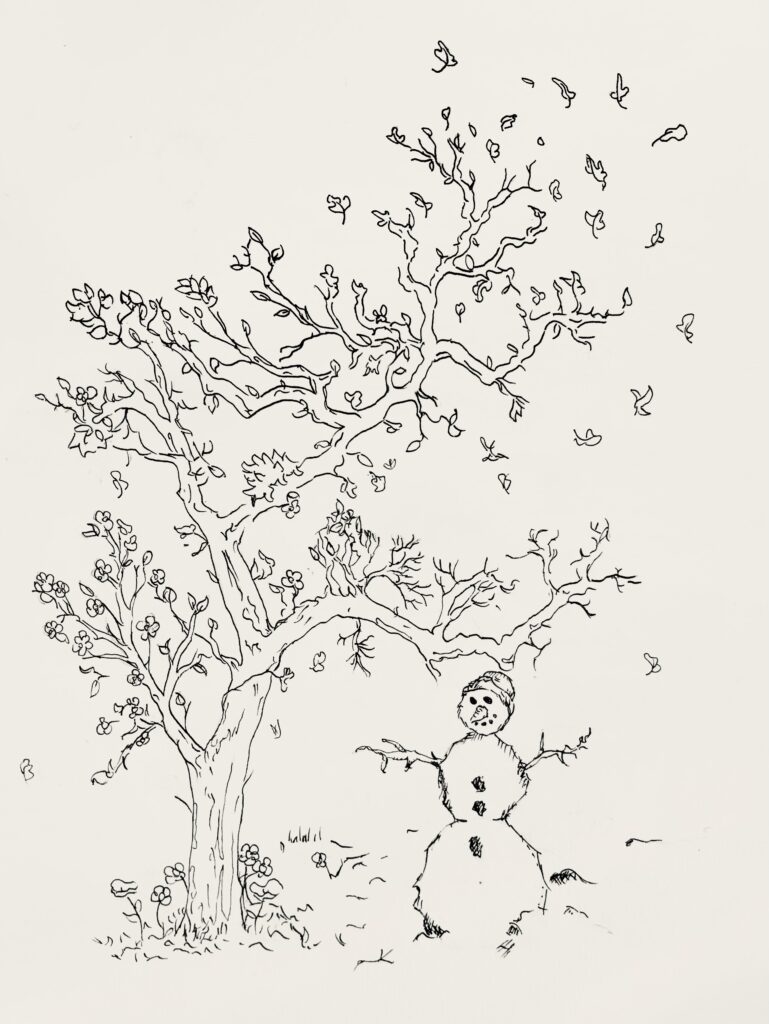By Aimée Dhonte
Edited by Julia Dec
Summer, sun, happiness. Winter, cold, sadness.
Do you ever wonder why those sets of words go so well together? Or why we unconsciously smile whenever someone mentions summer? Understanding the roles and effects seasons have on us is extremely important to better acknowledge our feelings and reactions throughout the year.

Some of us encounter what scientists call “Seasonal Affective Disorder” (SAD), or “seasonal depression” as people talk about it online. Even though many people feel concerned about this mental illness, it is important to be able to cross the line between feeling sad about winter starting and suffering from SAD. Indeed, it is normal to feel less active and show less enthusiasm in winter than in summer, but the 5% of adults who face this illness are affected on a whole different level.
Seasonal depression is well explained by its name. It is a kind of depression people encounter during and because of certain seasons. For almost everyone, it starts in late Autumn or early Winter and almost seems to vanish as soon as spring and summer come along. Symptoms are the same all through late October to early May, but studies show that most people suffer from SAD the most during the months of January and February, and even more precisely in the mornings, making it harder to find motivation and strength to get out of bed and start the day. Surely, losing interest in activities you once enjoyed or having trouble concentrating at school can both be a sign you suffer from SAD.
Even though the horrible weather is good enough of a reason to feel awful and unmotivated to do anything, there is a more scientific explanation to this mental illness. Indeed, shorter days create a chemical reaction in our brains that affects us all on different levels. The lack of light and sunlight in winter decreases the release of serotonin by your brain. This change can be felt quite harshly because this hormone is known for boosting one’s mood, making you feel motivated, focused, calm, and overall happy. Furthermore, while serotonin is now an endangered species, your brain is releasing melatonin. Because of the darkness and shorter days of winter, your brain releases more melatonin, also known as the “hormone of darkness” or “sleep-related hormone.” It works just like it sounds: it makes you want to sleep and makes you feel less motivated to do anything. You then spend most of your time in your room or in a dark place, increasing the levels of melatonin in your body even more. It is the beginning of a vicious circle known as SAD. This explains why most people who suffer from this illness live in the Northern Hemisphere, where the days are shorter and darker. I always like to joke and say the weather here in Luxembourg is as stable as most teenagers’ mental state.

In order to recover from Seasonal Affective Disorder, you first need to acknowledge it and ask for help. Whether it is from a friend, a teacher, a parent, or a specialist, you need to talk about it and share your feelings with someone else so you can better understand your needs and goals. Just like any depression, you need to get out of your routine and your comfort zone to fully heal. In the case of SAD, you need to find the strength to break the vicious circle you are in. Try going outside in the sunlight to allow your brain to create more serotonin. You should also find new activities or set yourself new goals to help you find more cheerfulness and interest in life. Even though you might always feel less joyful in winter, over time and with efforts, you can be capable of controlling yourself and be stronger than this mental illness. Who knows? Maybe you’ll even find peace and comfort in Luxembourg’s weather.
